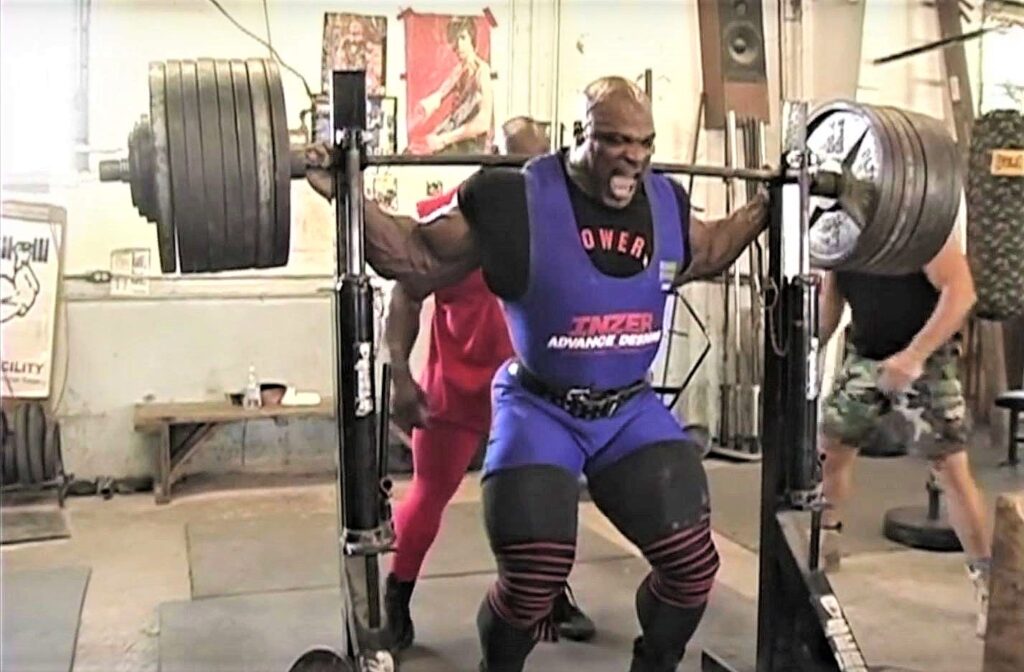There is literal power behind positive thinking. This isn’t some clap-along “Because I’m Happy” riff. But it’s nearly that simple. If you tell yourself you can do it, you’re more likely to do it; and, conversely, tell yourself you can’t and failure is more of an option. Positive thinking makes you stronger, literally. A positive mental attitude can make the difference between hitting a workout personal record or missing it and between getting 10 reps and struggling for 8. Positive thinking is an easy hack, too, once you know the most effective way of talking to yourself.
Here are six proven workout ways for increasing your strength via positivity.
1. BE POSITIVE OUT-LOUD.
You can keep your pep talk entirely in your head, but it’s better to let it out. This brings it closer to reality. Speak it or mouth it. You can also record it on your phone and play it back before and/or during your set. A recent study successfully used the latter method and combined it with #4 on our list.
2. ASSUME SUCCESS.
The great philosopher Yoda famously told Luke Skywalker: “Do. Or do not. There is no try.” What was true in a galaxy far, far away is true in your gym. Think or say things like “I will get six reps” or “I will deadlift this” and never just “I’ll do my best” or “I’m all in. Give it everything.” Don’t be wishy-washy or non-specific, even if positive. Make a specific command and assume success so hitting your target becomes almost a foregone conclusion.

3. VISUALIZE POSITIVE RESULTS.
Back up your words by visualizing them becoming a reality. Research has demonstrated the success of visualization in strength athletes. While telling yourself you’re going to bench press a weight for three reps, picture yourself doing it. And make this picture come alive by involving as many of your five senses as possible. For example, see (1) and feel (2) the bench beneath you, the bar in your hands, and your clothes against you, (3) taste your intra-workout drink, (4) hear the music in your earbuds, and (5) smell the gym ambiance (sorry).
Exercise scientists call these sensual pictures imagery scripts and explain that this technique needs to be practiced regularly for maximum effect: “Regardless of how relevant or personally meaningful imagery scripts may be, athletes will only incur their greatest benefits when they can competently use imagery skills. Focused practicing for as little as 10–15 minutes each day can help athletes gain better control over their images, assist them in using the internal and external perspective, and facilitate the inclusion of multiple senses.”
4. NOD.
A unique study compared the effects of head nodding or head shaking while participants listened to their own (recorded) positive or negative self-statements before a vertical jump, one-rep squat, and one-rep deadlift. While head shaking combined with either positive or negative self-statements had little additional effect, head nodding significantly increased the performances of exercisers when listening to positive self-statements. Physically affirming verbal encouragement increases its efficacy. Nod if you agree. And nod along to your pre-set positivity.
5. USE A POSITIVE MANTRA.
The most famous pre-set self-talk of all-time is the “Light weight!” and “Ain’t nothin’ but a peanut!” 8-time Mr. Olympia Ronnie Coleman barked before repping weights that were anything but light (800-lb. squats, 600-lb. T-bar rows…). You may also want to use a simple slogan that you can return to again and again just before the going gets tough to tell yourself it won’t be that tough after all. Make it your workout mantra. Really, you got this. Light weight!

6. FOCUS ON THE IMMEDIATE.
Focus your pre-set and intra-set positive thinking on only your immediate goal (like 8 reps in your set), not your long-term aspirations or even your targets for the whole workout. Go from A to B in one set and B to C in the next set and then start again at A with the next exercise, and you’ll eventually reach your short-term and long-term goals. On the other hand, try to leap ahead and you’ll likely lose focus on the task at hand. Think “small” (a realistic, immediate goal) to grow big.
CONCLUSION: THE POWER OF POSITIVE THINKING
The power of positive thinking is real, and it can be real effective if used correctly. The following six ways for amplifying this power can be and should be used in combination. They should also be practiced (especially when incorporating your senses in visualizations) for ever-better results. Make positivity a crucial component of every workout.
Related content:
Science Says: Music Increases Your Strength
















































